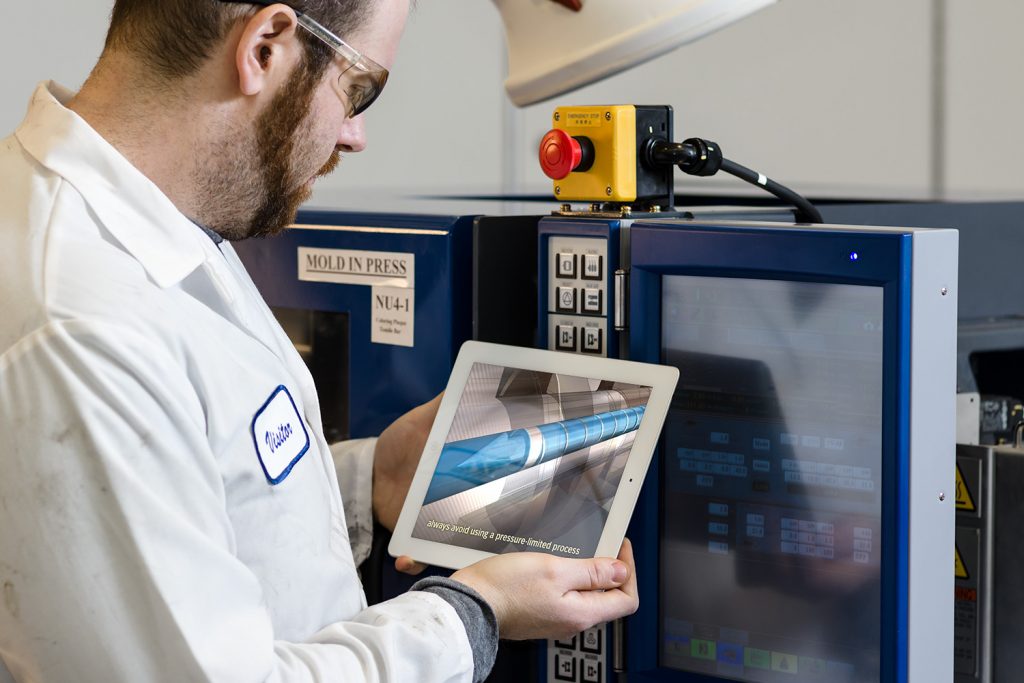A recent industry survey revealed most plastics manufacturers lose over $250,000 dollars in scrap and downtime every year. The companies that participated in this survey attributed most of these losses to daily mistakes made by an under-skilled workforce. This is true even in facilities that utilize the latest processing technologies.
While modern machines are much more capable and accurate, your production personnel need proper training in order to take advantage of these technologies. Here, we’ll share 6 specific areas where proper training can directly improve your company’s bottom line.
Decreased Machine Downtime
Every operation needs to keep accurate records of uptime & downtime. You also need methods of differentiating between different types of downtime, such as changeovers, troubleshooting, maintenance, or when there’s just nothing on the schedule.
Some downtime is helpful, such as process development, maintenance, or mold trials. Other downtime, such as troubleshooting and repairs, directly affect your profitability. You can quickly improve this with proper training.
Improved Troubleshooting Time
Your operation should document exactly why a process requires troubleshooting and how long it’s down. You can typically find this information in a process log, which is kept at each molding machine. It’s important to measure this time, but it’s even more important to measure the number of times a process needs troubleshooting. This information will help you determine if techs are using an effective scientific approach to troubleshooting or just pushing buttons.
Faster Machine Startup
Establish startup times to determine specifically what outside influences contribute. For example, tracking and properly documenting delays such as materials not properly prepared or dried, tools unavailable, hot runner controller maintenance, and auxiliary equipment not ready will let you know where to improve.
Shorter Cycle Times
Through proper training, a technician or process engineer can systematically develop a robust process that will lead to shorter cycle times without sacrificing part quality. Keep in mind just a 2% improvement in cycle time gains you an additional week of production capability each year.
Quicker Changeovers
This point was often brought up when we ran our survey of 42 plant managers. They noted a huge improvement in changeover time — especially when tracking the entire changeover from last shot to first piece approval. This metric covers not only the capability of the techs but also the ability of everyone in the production environment to work together, from planning to quality.
Since changeover time is typically the biggest contributor to downtime, it stands to reason a more capable workforce can coordinate better to get one job out and the next one up and approved.
More Energy-Efficient Processes
YYou can easily measure the cost of energy with your company’s monthly electric bill. This may be adjusted based on the percentage of machine utilization, but also note that proper training will ensure you have much greater percentage of productive uptime vs. non-productive downtime.
As an example, let’s say your part removal time is 1 second longer than it needs to be. That means your molding machine will operate 27 hours longer than necessary to produce 100,000 parts. That’s a lot of energy-consuming machine time.
Routsis Training offers a wide range of products and services that can help your company defray production-related expenses and increase the profitability of your plastics processing operation. Please visit our website to learn more.

0 Comments Leave a comment